Blogs

Understanding Invar Magnetic Materials: A Complete Tutorial on Properties and Applications
Overview:
The article focuses on the properties and applications of Invar magnetic materials, emphasizing their exceptional thermal stability and high magnetic permeability, which make them essential in precision engineering and advanced technologies. This is supported by detailed discussions on their use in industries such as aerospace and electronics, as well as the historical context of Invar’s development and ongoing trends in material innovation, highlighting its critical role in ensuring reliability and accuracy in various applications.
Introduction
Invar materials have emerged as a cornerstone in the realm of precision engineering, renowned for their exceptional dimensional stability and unique thermal properties. As industries such as aerospace, automotive, and electronics increasingly rely on high-performance materials, the significance of Invar continues to grow. This article delves into the key properties, historical evolution, and various applications of Invar, alongside its essential role in advanced technologies. Highlighting the latest research and trends, it underscores the importance of understanding the distinct characteristics of Invar variants, such as Invar 36 and Invar 42, for strategic material selection.
Furthermore, the integration of supplementary materials like Mica Tape enhances the reliability and safety of applications across diverse sectors. By exploring these dimensions, procurement managers can make informed decisions that align with the demands of modern engineering challenges.
Key Properties of Invar Magnetic Materials
This alloy is distinguished by its exceptional thermal expansion properties, characterized by minimal expansion over a broad temperature range. This stability is essential in contexts requiring precise dimensional integrity, particularly in precision instruments and scientific devices. Notably, alloy 36 exhibits a thermal shock resistance parameter (R’) of 20125 W/m, indicating its robustness under rapid temperature changes.
Besides its thermal stability, this alloy features high invar magnetic permeability, making it an ideal option for various advanced technologies. Its excellent corrosion resistance and commendable mechanical strength further enhance its applicability, ensuring reliable performance even in extreme conditions. Recent research, such as the case study on fiber-diode laser hybrid welding of a specific alloy, highlights that the addition of diode laser power improves the mechanical properties of welded joints, achieving a maximum tensile strength of 493.1 MPa.
Furthermore, invar magnetic materials are utilized alongside high expansion alloys in applications such as bimetallic thermostats and temperature regulation assemblies, demonstrating their critical role in advanced systems. Mica Tape Products, recognized for their high-temperature resistance, flame resistance, and dielectric strength, play a crucial role in ensuring reliability across various uses, from household appliances to industrial machinery. These products are invaluable for procurement managers seeking to source supplies that guarantee safety and performance in electrical engineering.
The combination of the alloy’s stability and Mica Tape’s insulation properties is particularly beneficial in applications requiring both dimensional integrity and electrical safety. The authors declare no known competing financial interests or personal relationships that could influence the reported work.
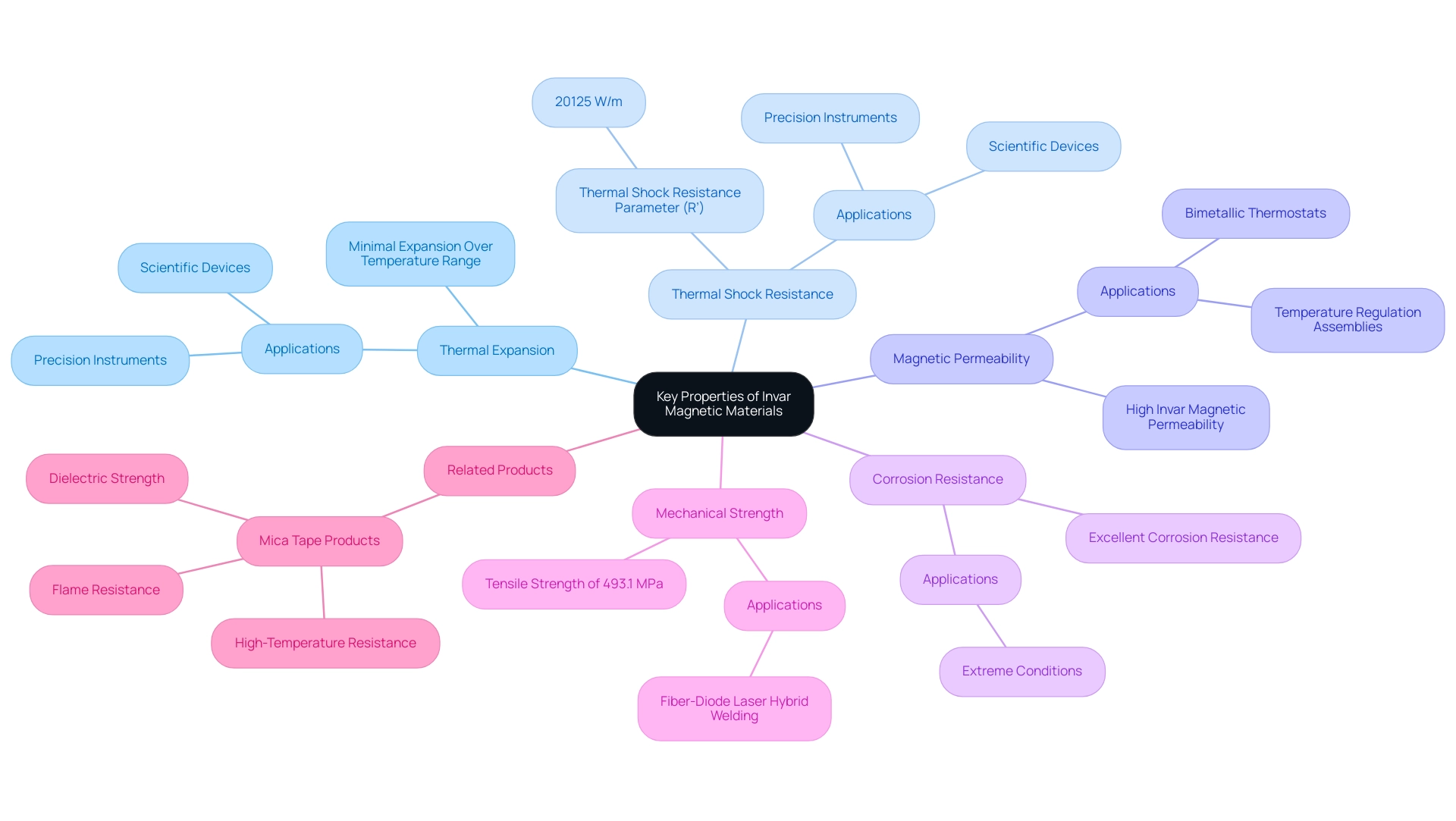
Applications of Invar in Industry and Technology
This alloy, renowned for its remarkable dimensional stability, is a critical substance in the aerospace and automotive sectors, where it is extensively utilized in components such as aircraft engine parts and precision gears. As we transition into 2024, the aerospace industry continues to demonstrate a growing demand for Invar, fueled by the requirement for high-performance substances that can endure extreme conditions while preserving accuracy. This corresponds with the growing dependence on specialized substances such as Mica Tape products, which are intended for high-temperature resistance and electrical insulation, rendering them perfect for essential uses in electrical engineering.
Mica Tape products feature excellent flame resistance and dielectric strength, essential for electrical applications requiring additional safety measures against fire hazards. According to the 36 market analysis report, the increasing production expenses and the presence of substitute materials present considerable difficulties for the industry. In the electronics manufacturing domain, this material plays a vital role in producing measuring instruments and precision components, essential for accurate measurements and functionality.
Its remarkable invar magnetic characteristics make it especially appropriate for magnetic shielding uses and in developing magnetic sensors, where reliable performance is crucial. Moreover, the ability of this material to enable the production of high-quality optical devices highlights its significance in promoting contemporary technological uses. The need for robust solutions in electrical insulation is echoed in the performance of Mica Tape products, which offer superior insulation properties for various applications.
As noted by Priya Nagrale, a Senior Research Analyst, ‘Invar’s unique characteristics make it indispensable for ensuring reliability and precision in critical components across these industries.’ Furthermore, North America is anticipated to possess a substantial portion of the Tooling In Composite Market, backed by major contributors and demand in aerospace and automotive industries, highlighting the relevance of this alloy alongside other high-temperature substances.
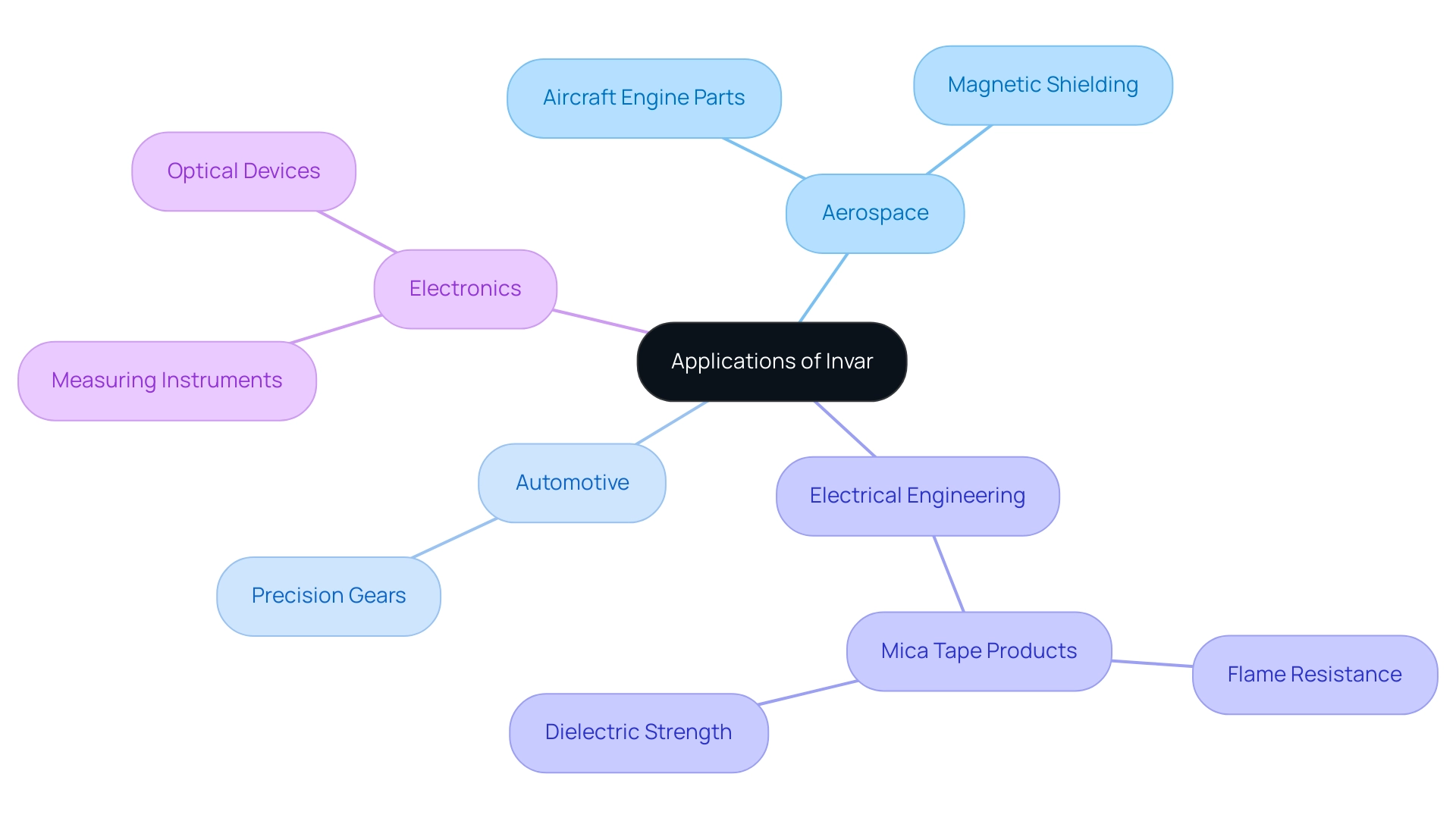
A Brief History of Invar Alloys
In 1896, Swiss physicist Charles Edouard Guillaume embarked on groundbreaking research aimed at enhancing materials used in precision instruments. His focus on thermal expansion led to the discovery of a unique alloy characterized by its remarkable invariant thermal expansion properties. As Guillaume stated, since he regarded the expansion of his new alloy ‘invariable’, it ultimately became recognized by that name.
This term reflects its unique characteristic, which became pivotal in addressing challenges in precision engineering. Guillaume’s outstanding contributions to the field were recognized when he was awarded the Nobel Prize in Physics in 1920. Over the years, this material has been refined through advancements in alloy composition and processing techniques, establishing itself as an indispensable component in precision engineering and technology.
For instance, the Free-Cut ’36’ Alloy, a variation of the original alloy, offers improved machinability while maintaining a low coefficient of thermal expansion, although its availability is decreasing due to rising costs and advancements in machining technology. Furthermore, the Low Expansion ’45’ alloy boasts a relatively constant rate of thermal expansion up to about 450°C, underscoring its significance in various applications. This historical accomplishment not only emphasizes the importance of this alloy in precision engineering but also highlights the enduring influence of Guillaume’s contributions, which continue to shape the advancement of contemporary substances.
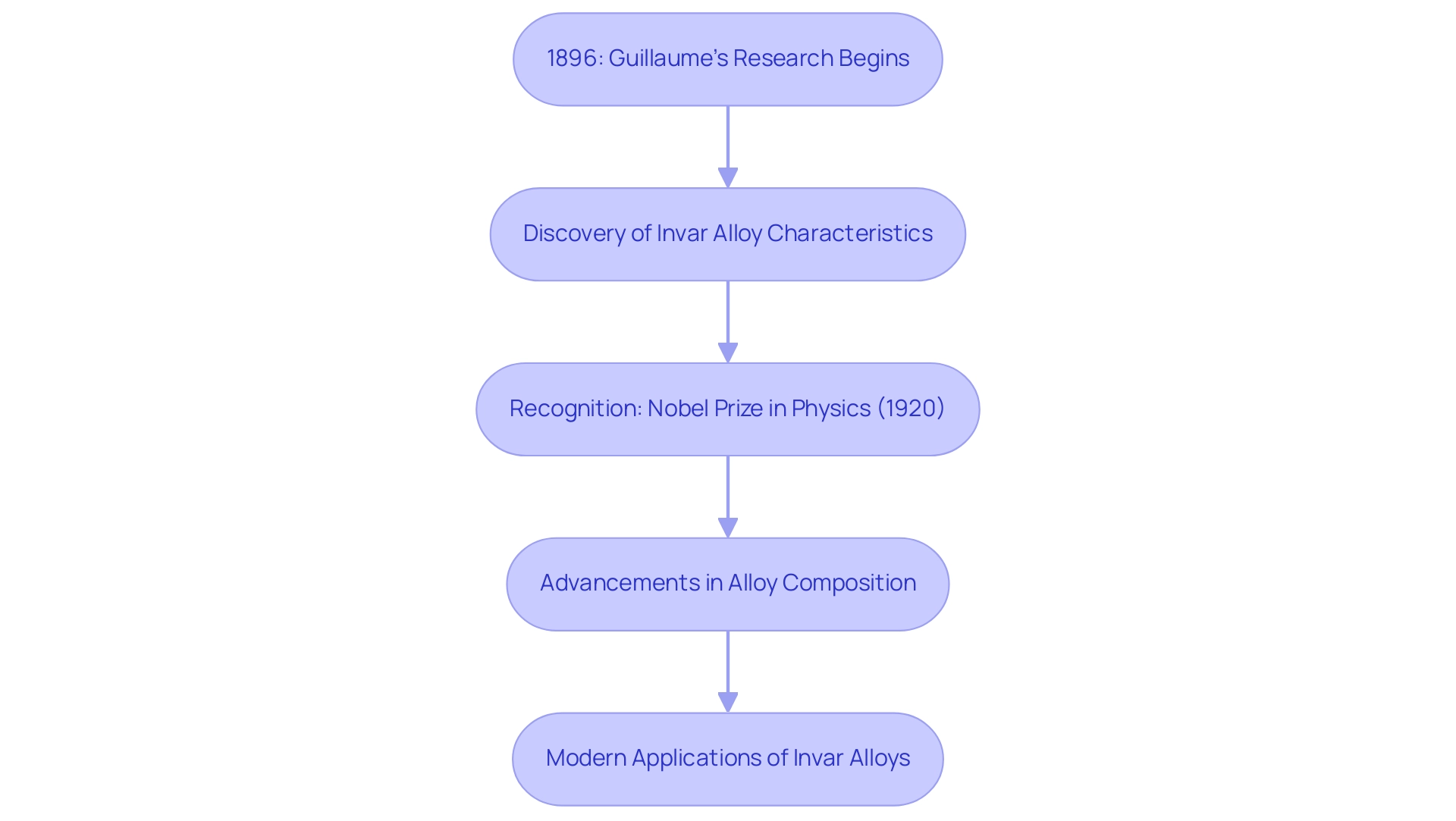
Exploring Variations of Invar Materials
This type of material demonstrates a variety of variations, with 36 and 42 being the most prominent. The alloy 36, which contains 36% nickel, is renowned for its exceptional thermal stability, making it ideal for applications that demand precise dimensional control across temperature fluctuations. Conversely, this alloy, with its higher nickel content of 42%, is specifically engineered for enhanced invar magnetic performance, particularly in environments where magnetic shielding is crucial.
Procurement managers must grasp these distinctions to effectively align material selection with project requirements. For example, in sensitive electronic devices and critical aerospace projects, this alloy containing 48% nickel is often preferred due to its high magnetic permeability and dimensional stability. This is demonstrated in a case study where the alloy 48’s unique characteristics made it a preferred choice for projects demanding precision and efficiency.
As Charles Edouard Guillaume, the Swiss physicist who developed these alloys, noted, ‘The unique characteristics of these substances allow for innovative applications across various industries.’ Recent studies comparing variant 36 and variant 42 emphasize their respective benefits, reinforcing the significance of choosing the suitable type for specific project requirements. Furthermore, it is crucial to take into account the limitations of VIM VAR Core Iron, which consist of higher costs linked to high-purity production methods and difficulties in machinability compared to more ductile substances.
Comprehending the newest variations of alloys as of 2024 further equips procurement professionals to make strategic choices in their sourcing of supplies.
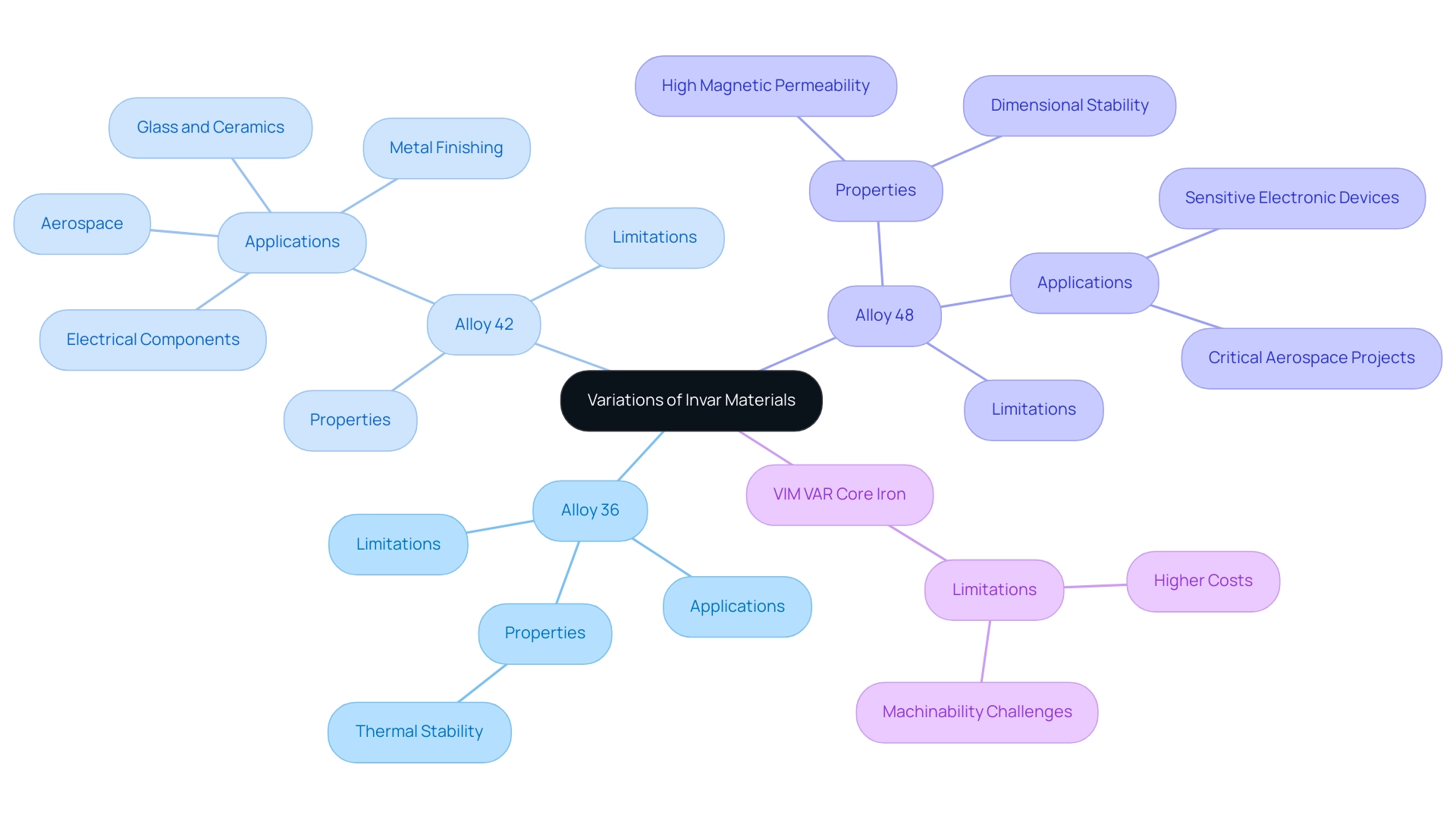
Understanding the Anomalous Properties of Invar
This material is distinguished by its anomalous properties, primarily attributed to its unique atomic structure that effectively minimizes thermal expansion. This characteristic arises from the specific electron configurations of its constituent elements, which form a stable lattice structure that exhibits remarkable resistance to thermal fluctuations. Significantly, the effect is universally observed in all ferromagnetic Fe-based bulk metallic glasses (BMGs), underscoring the importance of invar magnetic characteristics in materials science.
Furthermore, the material’s high magnetic permeability is a consequence of its ferromagnetic nature, which allows it to efficiently channel invar magnetic fields. These scientific principles are essential for professionals seeking to utilize the beneficial characteristics of this material in advanced applications. Recent studies, including the case study titled ‘Atomic Structure of the Fe-Ni Alloys,’ have provided deeper insights into the localization of d-electron density and the invar magnetic properties that enhance its performance in various environments.
This research employed elastic neutron scattering to pinpoint superstructural reflections and create a phase diagram for the alloys, demonstrating the complex relationship between atomic structure and substance behavior. Additionally, as Sergej Baričević noted in his research on calibration methods, understanding these characteristics not only clarifies the behavior of this material but also supports its implementation in cutting-edge technologies. Furthermore, when evaluating substances for electrical insulation, the characteristics of this alloy can enhance the high-temperature resistance and electrical insulation abilities of Mica Tape products.
Both substances exhibit exceptional performance in demanding environments, making them suitable for applications in electrical engineering where reliability and durability are paramount.
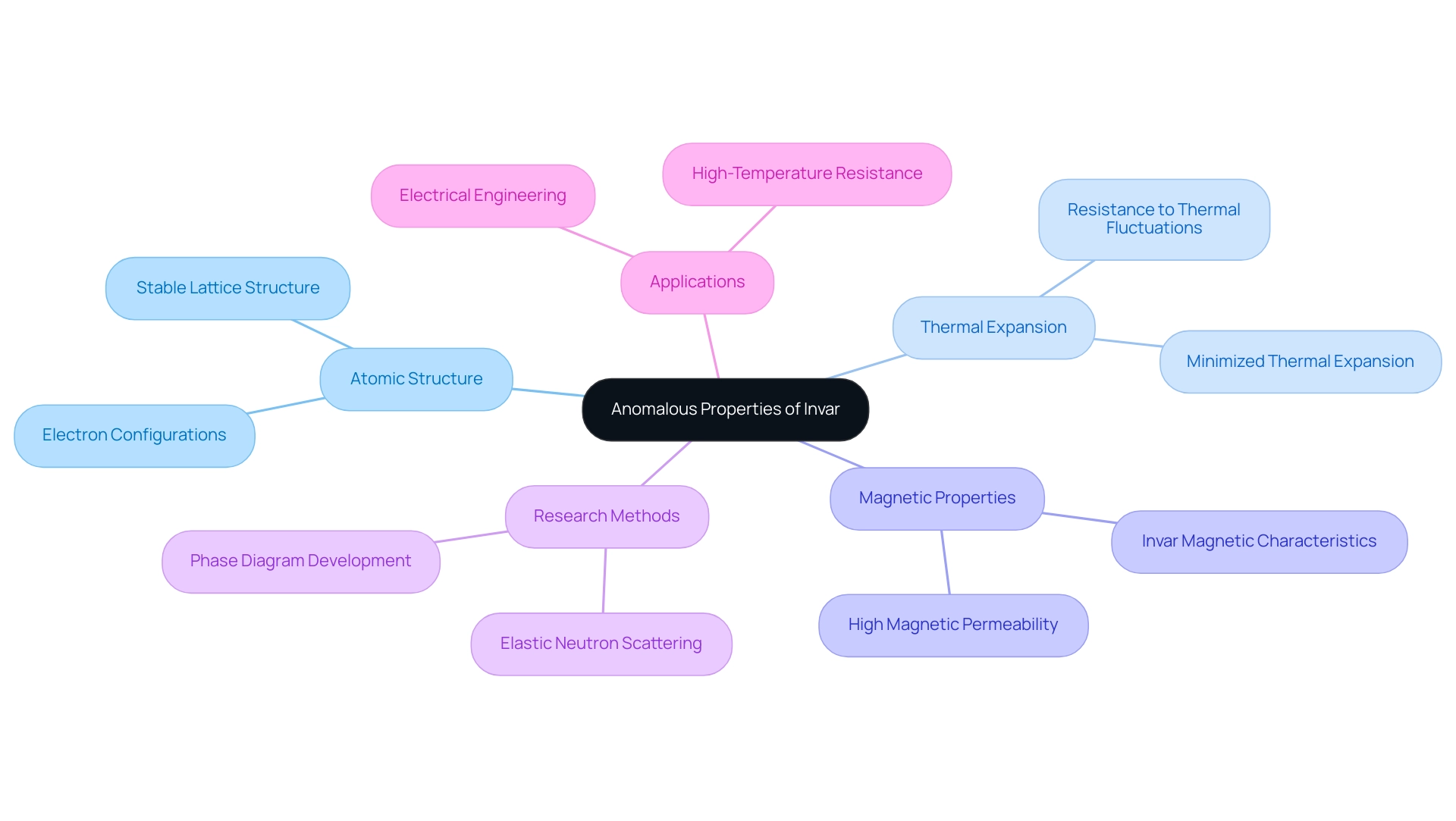
Future Trends in Invar Material Development
The sector for this specific alloy is on the verge of considerable expansion, driven by ongoing progress in alloy technology and an increasing demand from high-precision industries such as:
- Aerospace
- Electronics
- Energy
- Instrumentation
- Construction
- Medical
Ongoing research endeavors are dedicated to refining the properties of these alloys, with a focus on developing innovative compositions that promise to enhance performance while simultaneously driving down costs. Furthermore, as industries increasingly prioritize sustainability, there is a growing emphasis on innovative recycling and reuse practices for specific resources.
This shift not only addresses environmental concerns but also presents strategic opportunities for procurement managers to integrate more sustainable practices into their supply chains. Working together with local institutions to promote advancements in this technology can create a community-centric approach that enhances resource sharing and knowledge transfer, ultimately benefiting overall project outcomes. For example, addressing project delays caused by communication gaps can significantly enhance productivity, emphasizing the importance of clear expectations and supportive resources in projects involving specific materials.
Moreover, the report published by Lucintel, priced at $4,850 for a single-user license, underscores the economic significance of the Invar market, indicating a robust interest in these materials.
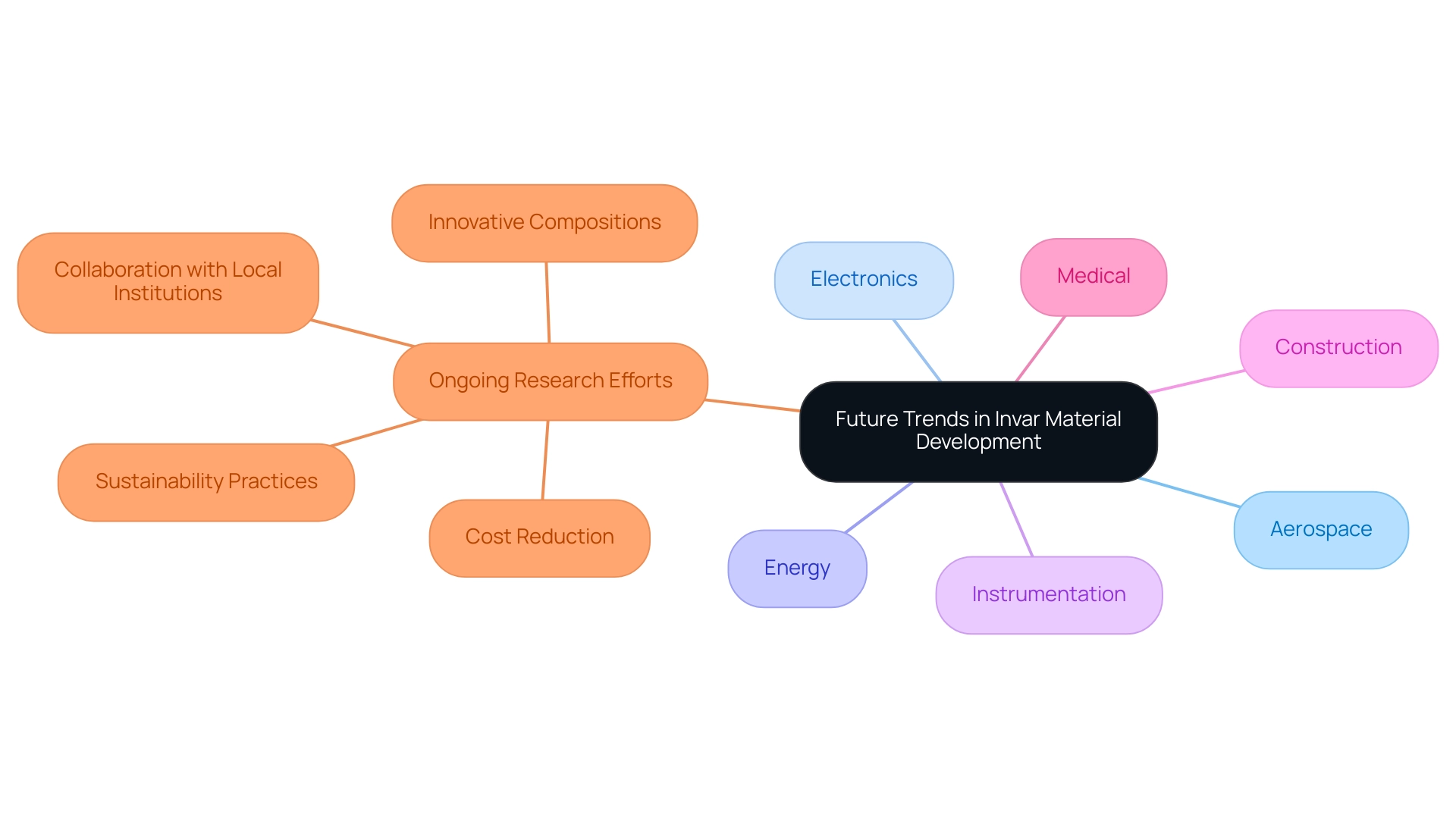
Conclusion
Invar materials stand as a testament to the evolution of precision engineering, offering unparalleled dimensional stability and thermal properties that are indispensable across various high-performance industries. From aerospace to electronics, the unique characteristics of Invar variants, particularly Invar 36 and Invar 42, highlight the importance of strategic material selection for procurement managers. The integration of supplementary materials like Mica Tape further enhances the reliability and safety of applications, ensuring that electrical engineering projects meet stringent performance standards.
Historically rooted in groundbreaking research, Invar continues to thrive through advancements in alloy technology and a growing understanding of its anomalous properties. The ongoing exploration of Invar’s capabilities not only solidifies its role in current applications but also paves the way for future innovations. As industries navigate the challenges of production costs and the demand for sustainable practices, the potential for Invar materials to adapt and evolve remains significant.
In summary, recognizing the distinct properties and applications of Invar materials is crucial for professionals aiming to make informed procurement decisions. By leveraging the latest research and trends, stakeholders can align their material choices with the precise requirements of modern engineering challenges, ensuring that projects are executed with reliability, efficiency, and a commitment to quality. The future of Invar is bright, and its continued development will undoubtedly play a pivotal role in advancing technology across multiple sectors.




